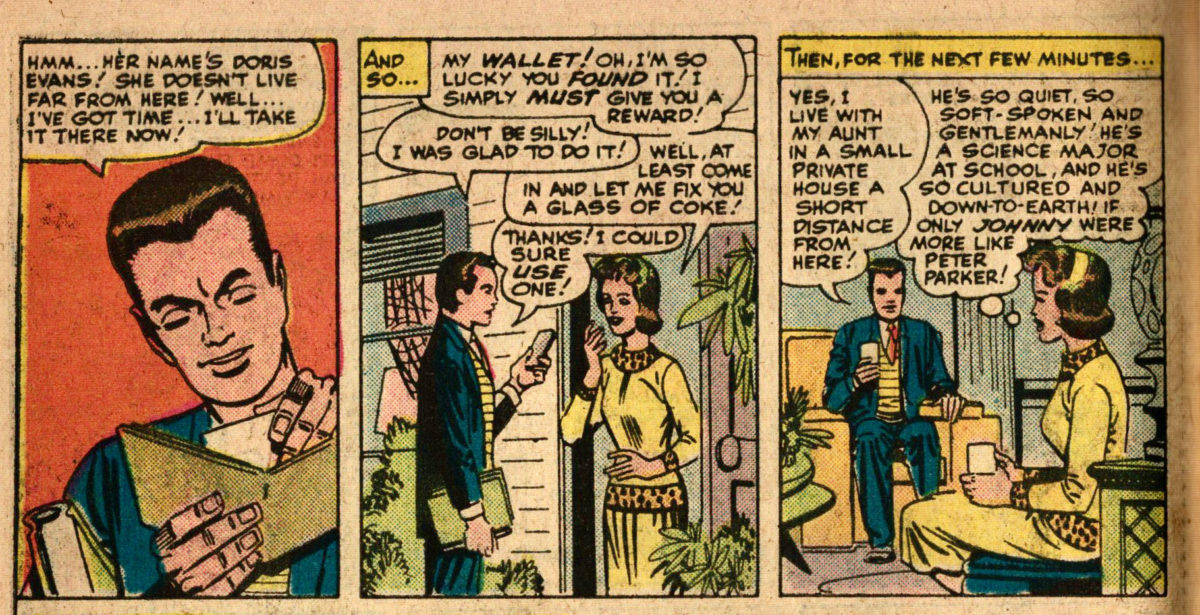Featuring: Thor
Release: January 5, 1965
Cover: March 1965
12 cents
Written at white heat by: Stan Lee
Drawn with purple passion by: Jack Kirby
Inked with golden serenity by: Chic Stone
Lettered on a blue Monday by: Sam Rosen
16 pages
| Previous | #335 | Next |
|---|---|---|
| Avengers #16 | Reading order | Journey Into Mystery #114, Story B |
| Journey Into Mystery #113, Story B | Journey Into Mystery | Journey Into Mystery #114, Story B |
“The Stronger I Am, the Sooner I Die!”
Well, damn. That’s maybe the most compelling title yet. It turns out to also make complete sense into the context of the story. I like it.

This is the issue Thor finally gets good.
Quality-wise, Thor’s been turning around since about a dozen issues back. It went from being the single worst title to a pretty decent one. The stories still haven’t been much to speak of, but the art and action have been excellent. There’s been great storytelling of late, even if not applied to many stories worth telling.
The great storytelling has been owed to the pairing of Kirby and Stone. We just bid farewell to Stone’s tenure on FF. Now we must bid farewell to him on Thor (recall we’ve jumped back in time, so this is a month before his final FF issue). Vince Colletta will graduate from the Tales of Asgard backups and start on the main strip. There are those who love Colletta’s work on Thor, and there are many others who… don’t. We’ll see what we think in the months to come.
We are jumping back in time a couple months. Thor is changing. It has so far mostly consisted of identifiable discrete stories, usually one or two issues long. No more. Stories will flow into each other; it will be hard to tell where one begins and ends. It will be hard to identify where Thor gets enough of a breather to go be an Avenger. (Though we know that soon won’t be an issue.) We’re already behind on our Dr. Strange and Hulk reading because they’ve started the “saga” approach to storytelling.
To that end, the plan is to read the next 6 issues of Thor basically together, pausing only to check in on Daredevil, because it’s relevant to the happenings in Thor.
Most of the issue is dedicated to Thor’s battle against the Absorbing Man, but it ends indecisively. It’s over for the moment, but Thor’s foe remains at large. Meanwhile, we get a second conflict in the final pages. Loki has kidnapped Jane and holds her in his stronghold. Thor must go battle Loki and rescue Jane. Next issue will pick up both of these plots, but the Absorbing Man story still won’t conclude, and it will bleed into the Trial of the Gods” arc, which has already been hinted at in our Avengers reading because we got 2 months ahead.
We’ll talk in more detail about chronology next issue, but my loose idea is that this story takes place between the pages of Avengers #15. After the first Thor scene but before the second. The MCP disagrees, placing this squarely after Avengers #16.
Let’s dive in.
Continue reading “Journey Into Mystery #114”
































